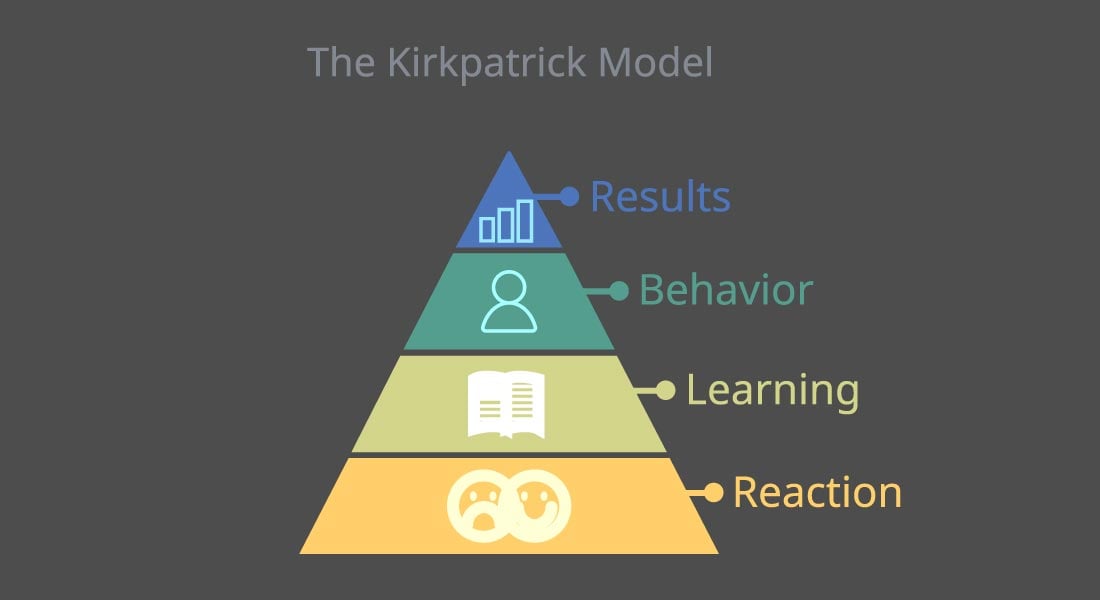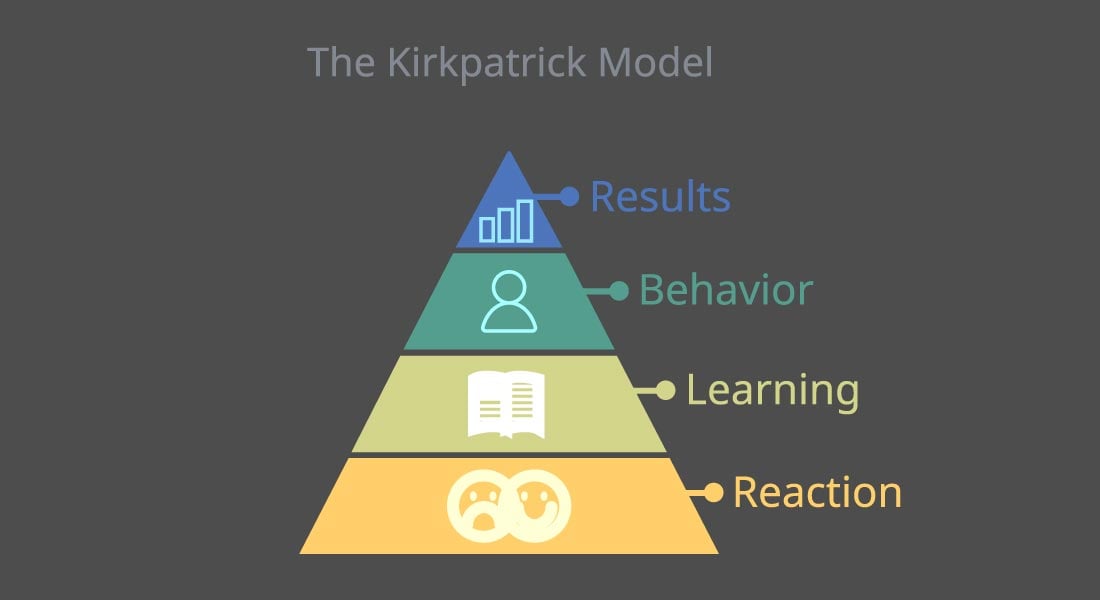How to Determine the Training Effectiveness of Your Corporate Training Using Kirkpatrick’s Model?
Assessing the effectiveness of training is crucial to know, improve, and implement strategies that move you in the direction of your business goals. Read to know the benefits of training evaluation and how to leverage Kirkpatrick’s model for the same.

First things first. Determining the effectiveness of your corporate training is essential and Kirkpatrick’s model can help. Conducting corporate training without proper and effective learning outcomes is a futile effort. The purpose of providing corporate training is to help the employees bridge the gap between the current and required skills so that they are able to contribute towards the desired business goals. Having a clear and thorough understanding of the concepts augments employees’ productivity and performance, thereby improving the training ROI.
Kirkpatrick’s Model For Effective Corporate Training Evaluation!
The four levels to determine the training effectiveness are:
- Reaction
- Learning
- Behavior
- Business results
But how do you know if your training approach is successful or not? Well, you can know it by evaluating the training effectiveness. It is an important indicator that enables you to probe into how well the training program has contributed to learners’ skills, knowledge, behavior, and overall learning. That’s just a brief of how training evaluation helps the L&D departments to polish the workforce competencies. Let’s explore the benefits of determining the effectiveness of corporate training in detail.
Benefits of Determining Training Effectiveness in Corporate Training
- It helps you understand if your training strategy is on the right track or needs some changes.
- Measuring training effectiveness allows you to evaluate the employee performance and its contribution to business results. So you can assess the training ROI.
- It enables you to identify and address any shortcomings for further training ventures.
- It helps you ensure that everyone complies with the training standards that your business has established.
- It provides insights into the viability and positive influence of new learning strategies and training programs.
With these benefits, it’s evident that assessing the success of a training program is crucial and integral in ensuring successful and productive corporate training. It enables the L&D professionals to set clear learning objectives and also plan and improve their learning strategies accordingly.
Create an everlasting impact by knowing how to align L&D and business. Check now!
Coming back to the main question.
How to Determine the Effectiveness of Your Corporate Training?
There are different models and multiple components that can be leveraged to measure the effectiveness of corporate training. But there’s this one training evaluation model that outshines others. And, it’s the Kirkpatrick’s model of training evaluation. It helps you examine the training effectiveness based on these four levels: reaction, learning, behavior, and results. Now, we will go through each component thoroughly and understand how they help in analyzing the effectiveness of training.
Level 1: Reaction
The first level to assess your corporate training is through reaction. It refers to the immediate response of the learner toward the course content. You can implement this model to gain insights into the quality of your training material, the training environment, the way the instructor conducted the training session, and how close the corporate training was in terms of fulfilling the desired learning objectives. While considering digital or online training, you can also check the impact of interactive components.
Regardless of the type of training, i.e., it can be Virtual Instructor-led Training, classroom training, eLearning, microlearning, or blended learning, you can use the reaction criteria to measure how learners perceive and engage with the content. Did they find it interesting, useful, and easy to understand or is there a scope to improve? So how does one evaluate the reaction? Well, this can be done by leveraging questionnaires, smiley sheets, feedback forms, etc., which can help you get an idea about the learner experience and takeaways, thereby giving you a better understanding about the efficiency of your corporate training.
Level 2: Learning
The second level of the Kirkpatrick model considers elements like knowledge, skills, confidence, proficiency, etc., to measure the success of the training. And to evaluate these attributes, you can use assessments. You can design assessments based on important KPIs which will benefit you tremendously. There are two types of assessments — formative and summative. Formative assessment forms a part of the ongoing process of learning where the trainer might give some sort of activity to get an idea about how well the learners are understanding and grasping the concepts.
Summative assessments, on other hand, are conducted at the end of the training session to measure what the learners have acquired through the training session. It depicts their overall understanding and knowledge about all the things conveyed in the training program. Usually, a benchmark is defined for the candidates to qualify the summative assessment.
Apart from the assessment evaluation, you can also deploy other techniques like group discussions, interviews, etc., to know about the learning status of the employees.
Level 3: Behavior
Improved behavior is a reflection of positive learning. The third level of Kirkpatrick’s model of training evaluation takes into account the behavioral component where you can determine the training effectiveness by analyzing whether the employees are actually implementing the skills and knowledge acquired during the training session. It can be observed in terms of enhanced productivity, performance, decision-making, and the ability to deal with unforeseen situations with confidence.
You can incorporate different techniques like periodic feedback meetings, self-assessment questionnaires, on-job observation, employee reviews, etc., to check the impact of your corporate training.
Level 4: Results
The fourth level of Kirkpatrick’s model focuses on the results. The results here refer to the business goal achievement and other organizational targets such as higher ROI, improved productivity and performance, reduced cost, timely completion of projects, etc. All these elements showcase if the training had a positive effect on company outcomes. For this, you need to have a comprehensive framework that includes the Key Performance Indicators (KPIs) and learning indicators in a well-integrated and organized manner. All the teams must be considered and should work closely to ensure no evaluation component is missed out.
Signing Off!
Kirkpatrick model is a reliable tool to determine the effectiveness of your training efforts. It provides a holistic overview of the training outcome as it takes into account the four major levels which are reaction, learning, behavioral, and results, that cover the training effectiveness from instant outcome to long-term benefits. All these elements help you evaluate the training ROI which is an important factor in classifying the training as a success or a failure. Well, if you’re interested to know more about Kirkpatrick’s evaluation model, ROI calculation, types of training, etc., here’s a valuable eBook for you. Check it out today!




